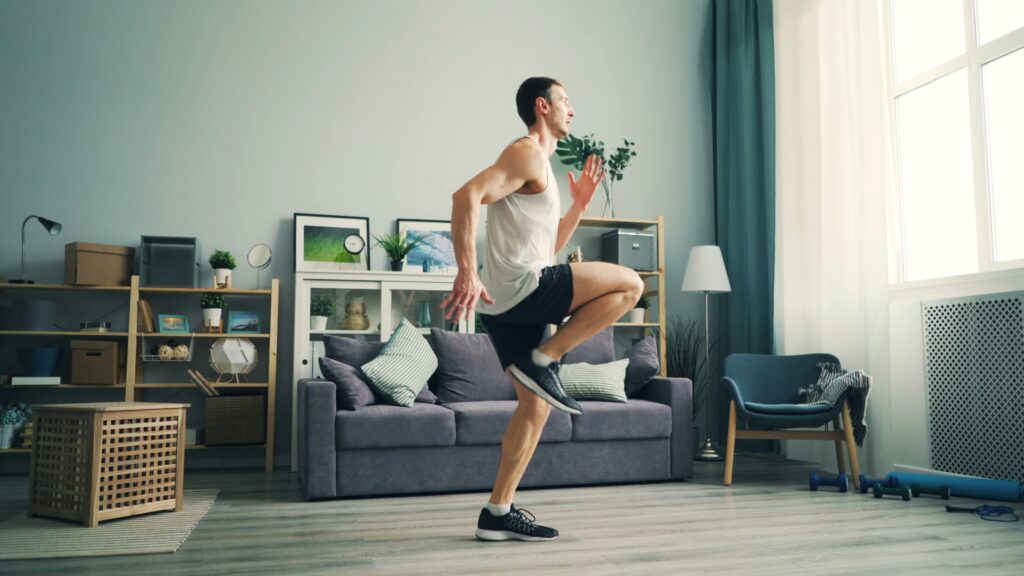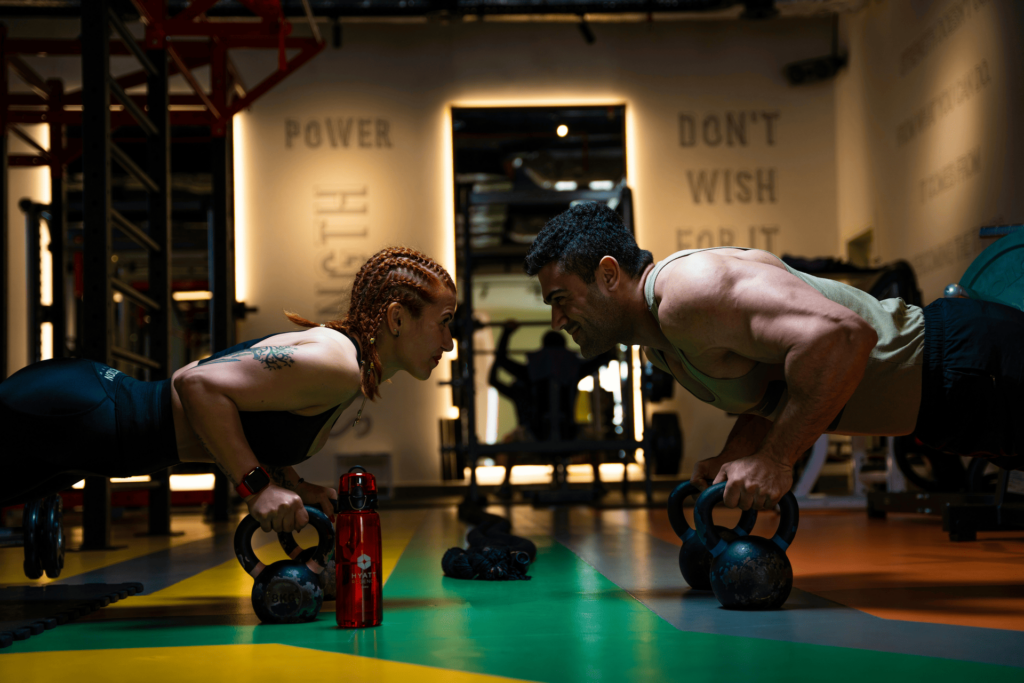If your neck pinches after long Zoom calls or your lower back aches by mid-afternoon, this 8-minute daily mobility flow can help reset your body fast.
Sitting for hours can compress your spine, tighten your hips, and strain your neck. But just a few minutes of movement each day can restore flexibility, improve posture, and ease tension where you feel it most.
Designed for busy schedules, this quick daily mobility routine targets the areas most affected by desk work without requiring a map or equipment.
In this guide, you will learn how to use an 8-minute daily mobility flow to move freely, sit more comfortably, and protect your hips, back, and neck starting today.
Why Desk Jobs Can Strain Your Hips, Back, and Neck?
A sedentary lifestyle, especially one centered around desk work, is a major contributor to stiff necks, tight hips, and sore backs. Because of the long-term strain it places on musculoskeletal health in the workplace, it is often referred to as “sitting disease.”
The human body isn’t built to stay still for hours. Prolonged sitting compresses the spine and stresses the lower back. Slouching forces the neck and back muscles into unnatural positions, which leads to chronic tension and fatigue. Over time, inactivity causes imbalances: core muscle weakens, and hip flexors shorten and tighten from being locked in a seated position. These changes affect posture, reduce mobility, and throw off stability.
You can see this in common desk job complaints: tight hips can pull your pelvis forward, changing your walking pattern. Spinal compression may show up as dull aches or, in severe cases, a herniated disc. Forward head posture adds extra weight to the neck and shoulders, often triggering stiffness, tension headaches, or limited range of motion.
If left unaddressed, this daily strain creates a vicious cycle: bad posture, weaker muscles, and ongoing physical stress.
What is a Daily Mobility Flow and How Does it Work?
A daily mobility flow is a short series of gentle, controlled movements designed to improve flexibility, restore joint function, and support overall mobility. It’s one of the simplest ways to offset the physical stress of a sedentary lifestyle and potential health risks.
After long hours of sitting, muscles tighten and joints lose their full range of motion. Mobility training works differently from static stretching, by guiding your joints through pain-free movement and lightly engaging the muscles to support them. Done consistently, these flows help prevent stiffness and restore balance to underused areas.
Unlike passive stretching, a typical mobility flow uses dynamic, active motions to prepare your body to move better.
For example:
- To release the spine: Try cat-cow stretches.
- To loosen the hips: Use leg swings or hip circles.
- To wake up the shoulder and neck: Do slow, controlled rotations.
These movements stimulate blood flow to the muscles and connective tissues and signal the nervous system to allow a greater range of motion. They’re simple enough to weave into your daily routine, no equipment required.
In short, a daily mobility flow acts like a physical reset button. It keeps you moving well, feeling better, and staying mobile, no matter how long you’ve been at your desk.
What are the Benefits of an 8-Minute Daily Mobility Flow for Office Workers?
Even just 8 minutes of targeted movement each day can make a noticeable difference in how your body feels at work. A daily mobility flow directly addresses the physical stress of desk sitting, helping you stay more comfortable, focused, and energized throughout the day.
And it’s not just about “stretching.” Done consistently, a mobility flow offers lasting benefits:
- Relieves tightness and stiffness. Gentle, intentional movements improve circulation and ease tension in the muscles that get overworked from sitting too long.
- Improves posture. When joint mobility and muscle balance are restored, your body naturally holds itself better, reducing spinal strain and slouching.
- Boosts energy and focus. Movement increases blood flow, delivering oxygen to the brain and muscles, helping prevent the mental fog and physical fatigue that creep in after hours at your desk.
- Reduces injury risk. Maintaining joint mobility and coordination lowers your chances of developing sprains, strains, or repetitive stress issues tied to sedentary habits.
In short, an 8-minute mobility flow isn’t just a break. It is one of the smartest habits you can build to protect your posture, boost productivity, and feel better in your body.
Step-by-Step Daily Mobility Flow Exercises for Hips, Back, and Neck Relief
To undo the effects of sitting for hours, it’s essential to target the areas most affected: your hips, back, and neck. The following mobility exercises are designed to restore natural movement and ease stiffness without requiring intense stretching or equipment.
By gently moving each joint through its pain-free range and activating the surrounding muscles, you’ll improve flexibility, reduce tension, and help your body feel more balanced.
Here’s a step-by-step guide you can follow daily, whether you’re at home or in the office:
For Hips:
- Hip CARs (Controlled Articular Rotations). Helps improve hip mobility and joint control. Improves hip joint health and range of motion.
- Lie on your back with knees bent and feet flat, or stand holding a chair for support.
- Lift one knee toward your chest, then slowly draw a big circle with your knee, keeping the rest of your body still.
- Reverse the direction.
- Perform 5 to 10 reps each way, per leg.
- 90/90 Hip Stretch. Builds both internal and external hip rotation, key to hip mobility.
- Sit with both knees bent at 90 degrees, front leg rotated outward, back leg inward.
- Lean gently over the front shin to stretch your glute.
- Hold for 30 seconds.
- Then lift the back knee a few inches without using your hands, hold briefly, and relax.
- Switch sides.
For Back:
- Cat-Cow Stretch. Improves spinal flexibility and posture.
- Start on all fours.
- Exhale as you round your spine (Cat), tucking your chin toward your chest.
- Inhale as you arch your back (Cow), lifting your chest and tailbone.
- Move slowly between the two for 10–15 reps.
- Thread the Needle. Opens the upper back and improves thoracic rotation.
- From all fours, slide your right arm under your left arm, lowering your shoulder and ear toward the floor.
- Let your upper back twist gently.
- Hold for 30 seconds, then switch sides.
For Neck:
- Neck Rotations. Relieves tension and improves range of motion.
- Sit upright with your shoulders relaxed.
- Slowly turn your head to the right, pause briefly, then return to the center.
- Repeat to the left.
- Perform 5–10 reps per side.
- Chin Tucks. Strengthens deep neck muscles and corrects forward head posture.
-
- Sit tall.
- Place two fingers on your chin and gently glide them straight back (like making a double chin),
- Don’t tilt your head up or down.
- Hold for 3–5 seconds, then relax.
- Repeat 10–15 times.
-
These mobility exercises help reduce stiffness in the hips, back, and neck, especially when done regularly and with intention. Stick to the routine, and you’ll start feeling the difference in just a few days.
Final Thoughts: Work Better with Daily Mobility Flow
Daily mobility is one of the simplest, most effective ways to care for your body during long workdays. In just 8 minutes, it helps release tight hips, ease back tension, and support better posture so you can move and focus with more ease.
Think of it like lunch meal prep: a small routine that sets you up for success throughout the day. Or like a short session of guided breathing that helps you reset when stress builds up. These bite-sized habits can create lasting improvements in how you feel and perform.
When practiced consistently, mobility flows offer long-term benefits, including comfort, focus, and resilience, making them one of the most effective daily rituals for health and productivity.
Frequently Asked Questions (FAQs)
Commonly asked questions about the daily mobility flow.


